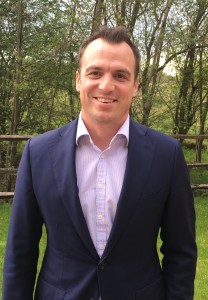
Having started his career in South Africa, Jean-Philippe Taylor, now Managing Director at Omnia Smart Technologies, took his extensive knowledge in the telematics and transport optimisation space to London where he saw the same disconnect between technology providers and consultants as he did in his home country. In this interview Taylor discusses his approach to IoT.
Comms Business Magazine (CBM): JP, can you explain this disconnect you are seeing in the market?
Jean-Philippe Taylor (JPT): The problem we see in the market was you have suppliers and you have consulting houses. The consulting houses go into businesses from a management point of view and tell the clients their issue but don't understood the intricacies of technology. You then have the technology providers that sell technology and don’t understand the consultative approach and don’t understand the customer’s operation.
We looked at the market and we thought there was a gap there, we had the consultative experience and we understood technology. About two and a half years ago we looked at the UK market and saw the same issues. We saw big consulting houses going into companies and working out a plan for them to deploy a solution, which also comes with a big invoice, but then the customer is left to go and find the technology themselves and more often than not they don’t understand it.
In the UK we offer telematics, route optimisation, business process improvements, supply chain optimisation, and consulting.
CBM: So how is your approach different?
JPT: Our approach is different because we look at customer data and understand the business processes. Then we look at how we integrate technology into that business process. That might mean the company needs to change their process but that is the whole point.
A lot of my targets are guys in the transport space like the haulage companies and local governments that have a fleet of vehicles. Having spoken to many local governments I know many of them are not happy with the technology they have. I think that is a symptom of having multiple technology suppliers selling into the business.
We put our name on all the technology we implement and say we are responsible for it rather than the supplier themselves. We manage the supplier and the customer just deals with us. Also, because we understand technology the supplier can’t pull the wool over our eyes either. If there is a problem then we know who is at fault and this cuts out a lot of finger pointing you often see between suppliers.
The approach we take is to start a conversation with the clients and understand their technology. From there I will pick up the problems in the business and then I’ll ask for some data. I then go away and analyse the data and show the customers what I can do for them. Once I can demonstrate the efficiencies and savings for the customer on their data I generally don’t have to do anything else. It’s there in black and white and the customer can put a monetary value on what we can do for them.
CBM: How do you go about choosing the right suppliers?
JPT: I work with specific suppliers that I have a good relationship with and where I understand the technology well. If I am putting my name to the technology then I have to be able to trust it because that is my reputation. I also choose suppliers that are willing to discuss the customer requirements and change and adapt, possibly even change their own processes to suit the customer. That is especially important to me.
I have a customer in Scotland that has previously invested millions of pounds in technology across three different divisions in his business but is getting frustrated because he isn’t seeing the return on investment. The reason is because of that disconnect between the technology and the business process. We have gone in to manage the process and ensure that gap is filled so the ROI can be realised.
CBM: Is there a trick when going into new customers when dealing with complex technology like IoT?
JPT: There is a balance to be struck with the customer and I don’t want to go in straight away and sell my entire portfolio because that would be overwhelming. The trick is to start small and let the customer trust you, then you can start looking at additional services.
Once we are in there we can spot problems because we understand that customer’s business process. We look to address those problems rather than trying to sell them various things all the time and that seems to work well. I want customers on board that are realising return on investment from technology. Simple. To me, that is it, and whatever is involved in that I do.

